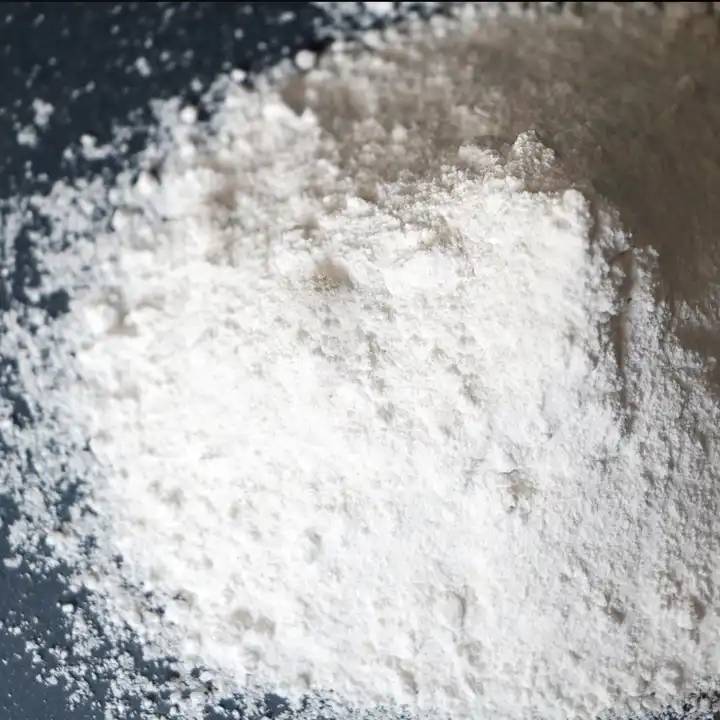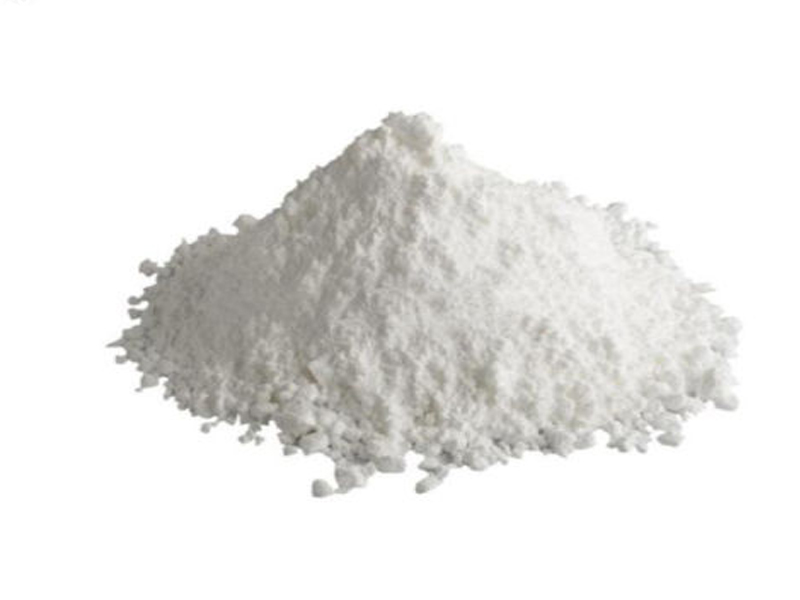Monohosphate d’adénosine cyclique en poudre de 3’, 5’
Nom de produit :3',5' -adenosine cyclique Monophosphate
Source: blé
Analyse :99%
Apparence: blanc à blanc cassé poudre Fine
Méthode d’essai :HPLC
Résidu de Pesticide: conforme à la norme (ce) No 396/2005
- Description Description
- Fiche technique
- Certificat de formation
-
Qu’est-ce que 3 et 4#39;,5' -adenosine cyclique Monophosphate?
3',5' -adenosine cyclique Monophosphate, also known as cyclic adenosine monophosphate (cAMP), is an important regulator of life and exists in trace amounts in a wide variety of cells in plants animals, and microorganisms. It is an important substance involved in the regulation of material metabolism and biological functions within the cell, and a variety of hormones in the body when acting on the cell, can prompt the cell to produce this substance, which in turn regulates the physiological activities of the cell and the metabolism of the material.
Le monophosphate d’adénosine cyclique est une substance importante avec l’activité physiologique largement présente dans le corps humain, générée par l’adénosine triphosphate catalysé par l’adénylyl cyclase, qui peut réguler une variété d’activités fonctionnelles des cellules. En tant que deuxième messager de l’hormone, il joue le rôle de régulation hormonale de la fonction physiologique et du métabolisme matériel dans la cellule. Il peut changer la fonction de la membrane cellulaire, inciter les ions calcium dans le plasma musculaire réticulocyte à entrer dans la myofibre, afin d’augmenter la contraction du myocarde, et il peut favoriser l’activité de la chaîne respiratoire oxydase, améliorer l’hypoxie du myocarde, soulager le symptôme de la maladie coronarienne et améliorer l’électrocardiogramme.
vert La technologie de printemps fournit en poudre 3',5&#- le Monophosphate d’adénosine cyclique, qui est une source naturelle d’adénosine phosphate cyclique. Le 3',5&#Le Monophosphate d’adénosine cyclique est une poudre de Monophosphate d’adénosine cyclique naturelle pure à haute teneur produite par le blé comme matière première, par le développement d’une technologie d’enrichissement d’extraction hyperthermique à froid hyperliée.
Spécification:
Nom du produit
Adenosine cyclique Monophosphate
Nom Latin
Triticum Aestivum L.
CAS non.
N ° 60-92-4
Source:
blé
Ingrédients actifs
Adenosine cyclique Monophosphate
analyse
99% de la population
Méthode d’essai
HPLC/HPLC
apparence
Blanc à blanc cassé poudre Fine
Résidus de pesticides
Conforme à la norme (ce) n ° 396/2005
Règlements:
Il est conforme à la réglementation de l’ue.
Vous cherchez un devis?Benefits:
Enhancement of Haematopoietic Function
Between 2009 and 2011, the Chinese Academy of Medical Sciences Hospital of Haematology made experimental observations on blood diseases and cyclic adenosine monophosphate cAMP for 3 years, and the number of participants in the experiment was 144 people. The observation result is: that the content of adenosine cyclic phosphate in the blood of leukaemia and cataract patients is significantly lower than that of normal people, and the content of adenosine cyclic phosphate is only about 60% of that of normal people.
Through further clinical trials, it was found that 3',5' cyclic adenosine monophosphate has a metabolism-promoting effect on haematopoietic stem cells. Supplementation of cyclic AMP can stimulate the haematopoietic function of bone marrow stem cells and thus effectively improve and treat aplastic anaemia. It is beneficial to the proliferation and differentiation of haematopoietic stem cells and restores the haematopoietic function of bone marrow stem cells, so it is effective in the treatment of aplastic anaemia.
3',5' Cyclic adenosine monophosphate promotes leukaemia cell apoptosis. It improves adverse reactions such as hair loss, nail loss, nausea, vomiting, and anorexia during radiotherapy. It can also counteract chemotherapy side effects and protect the recovery of normal haematopoietic bone marrow. Prevent severe bone marrow suppression caused by chemotherapy drugs.
Improvement of Cardiovascular Function
Cyclic adenosine monophosphate is an important intracellular substance involved in mediating biological functions such as substance metabolism, and it has the effects of nourishing the myocardium, positive inotropy, vasodilatation, and anti-arrhythmia. Studies have shown that supplementation with exogenous adenosine cyclophosphate or anti-platelet aggregation drugs can increase intracellular adenosine cyclophosphate content, thereby reducing cardiac load and inhibiting platelet aggregation. Meanwhile, on the basis of previous studies, it was found that cyclic adenosine phosphate has a mitigating effect on neurometabolism, especially neonatal ischemic-hypoxic brain damage.
Clinical observations have shown that exogenous 3',5' cyclic adenosine monophosphate improves myocardial hypoxia when it enters the body. Inhibits the production of free radicals and prevents ischaemia-reperfusion injury. Increase the concentration of adenosine cyclic phosphate in the blood, thus reducing the post-ischemic inflammatory response. Improves the altered capillary permeability caused by ischaemia.
Activating Brain Cells
In 1971, Sutherland, an American biochemist and pharmacologist, discovered that 3',5' cyclic adenosine monophosphate is an important messenger for transmitting life information by hormones acting inside cells. Adenosine Cyclic Phosphate has a very important role in repairing brain cells, activating brain cells and regulating brain cell function. It can also relieve brain cell fatigue and slow down the aging of brain cells.
At the same time, the American scientist Professor Kandel has done an experiment: the fruit fly was put in a special jar and the content of cyclic adenosine monophosphate cAMP in its brain cells was increased by scientific means. After only one attempt, it was able to remember the route to find sugar water, while ordinary fruit flies had to go through several specialized trainings before they could do that.
From the above test, it can be elucidated that cyclic adenosine monophosphate (cAMP) is able to stop the aging of brain cells and plays a decisive role in the activation function of aging brain cells. 3',5' cyclic adenosine monophosphate has the function of promoting brain cell metabolism, repairing aging and fatigued brain cells, preventing brain cell aging, keeping brain cell metabolism in a vigorous state, achieving vigorous self-renewal of the organism, and at the same time shifting short-term memory to long-term memory.
Regulation of Body Immunity
Cyclic adenosine monophosphate (cAMP) is an important regulator of life, and has an important role in regulating the physiological functions of the body, such as lymphocyte transformation, antibody formation and release, and cellular immunity.
Preventing and Controlling Tumours
In 1992, Professor Miyazaki, a Japanese scholar, discovered that 3',5' cyclic adenosine monophosphate has a dual effect on cell proliferation. Cyclic adenosine monophosphate in tumour cells is generally significantly lower than the level of normal cells, and the reduction of intracellular adenosine cyclic phosphate is the direct cause of malignant transformation of cells. Supplementation of cyclic AMP can induce apoptosis, inhibit metabolism and proliferation of tumour cells. It can even make their morphology change to normal cells.
Liver Protection
3',5' cyclic adenosine monophosphate enhances cellular immune function in patients with liver function. Meanwhile, cyclic AMP plays an important role in regulating lipid metabolism, inhibiting the synthesis of cholesterol and neutral fat in liver cells and avoiding the formation of fatty liver.
Applications:
In Pharmaceutical:
Adenosine cyclophosphate can be used for heart failure, myocarditis, sick sinus syndrome, coronary heart disease, and cardiomyopathy, and as an adjunctive treatment for arrhythmias. It has a role in improving symptoms such as palpitations, shortness of breath, and chest tightness in rheumatic heart disease. It can improve the efficacy of acute leukaemia in combination with chemotherapy, and can also be used to induce remission in acute leukaemia. Powdered 3',5' cyclic adenosine monophosphate cAMP has been used in medicine.
-
Télécharger le document
En poudre 3’, 5’ -adenosine cyclique Monophosphate COA
-
Télécharger le document
Cosmos 2023
Télécharger le documentHalal 2023
Télécharger le documentCasher 2023


 Anglais
Anglais français
français espagnol
espagnol russe
russe coréen
coréen japonais
japonais












